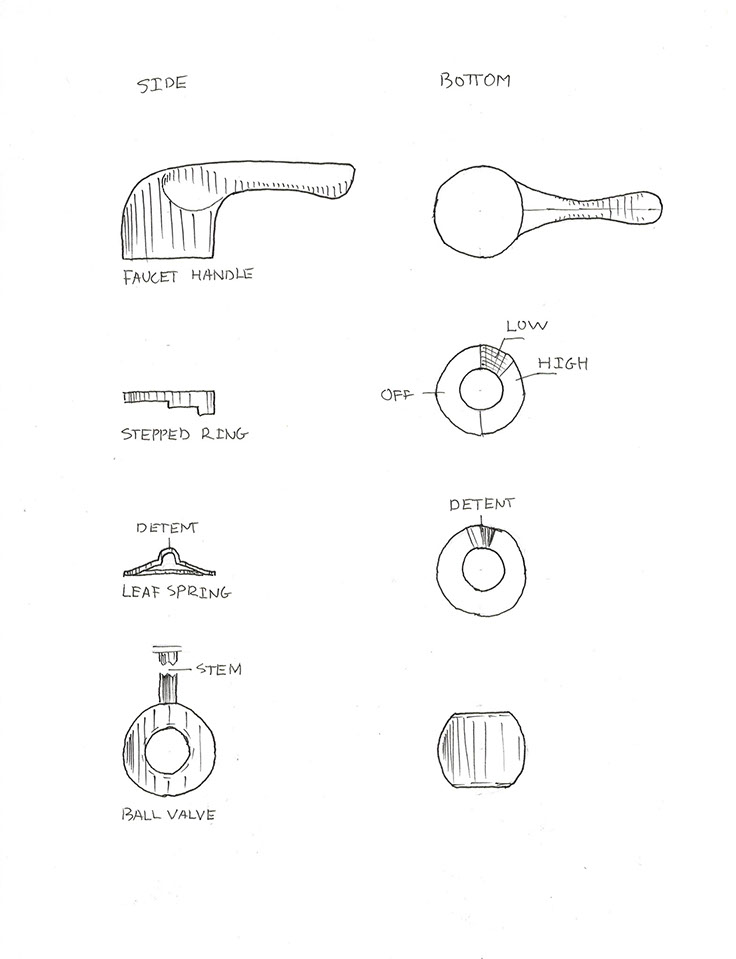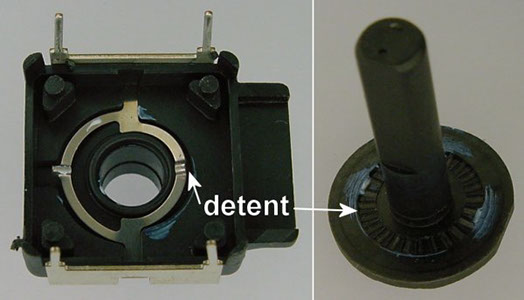OSCAR WONG
Water-Saving Faucet
The objective for this challenge was to design a modification to, or a new faucet fixture that conserved water. Additionally, user experience had to be maintained - the example given was that although low-pressure showers would save water, they would be inadequate for rinsing soap and shampoo, sacrificing user experience.
Link to Challenge
For my solution, I designed a modified standard faucet handle that provides tactile feedback when the faucet is turned on. This was based on my own experience, as I usually open a faucet all the way, regardless if I actually need the full flow of the faucet. The modification consists of two pieces. The first is a stepped ring attached to the handle, which the user rotates. The first shelf spans the first eighth turn, and a second, higher shelf spans the rest of the turn.

This challenge was solved before I made heavy use of CAD, hence the traditional drawing.
The stepped ring meshes with the other part, a leaf spring with a detent. When the detent crosses each shelf on the stepped ring, a noticeable resistance and bump is felt by the user. This has two uses: the first bump, when the faucet is initially turned on, also confirms that the faucet is all the way off, so that it's not accidentally left partially open and dripping water. The second bump, at 45 degrees or halfway on, confirms to the user that they are turning the faucet all the way on, and requires more effort to overcome. This second bump makes the user think twice if they really need such a large flow.

In a rotary encoder, detents provide tactile feedback. They perform the same purpose in the faucet.
The faucet also maintains user experience, as externally it looks like and is treated just like a regular faucet handle. It is also simple to install, as it is a self-contained unit and does not require any additional setup on behalf of the plumbing crew. Finally, it is cheap. simple, and durable, consisting of only two additional mechanical parts, without need for electronics.
